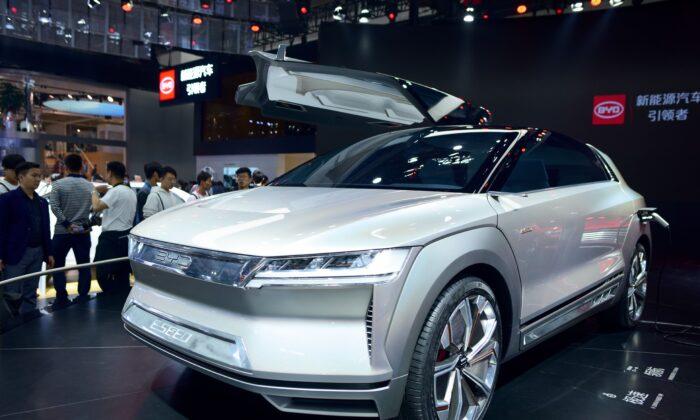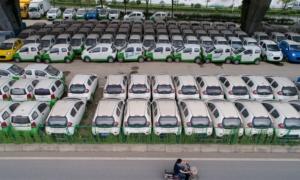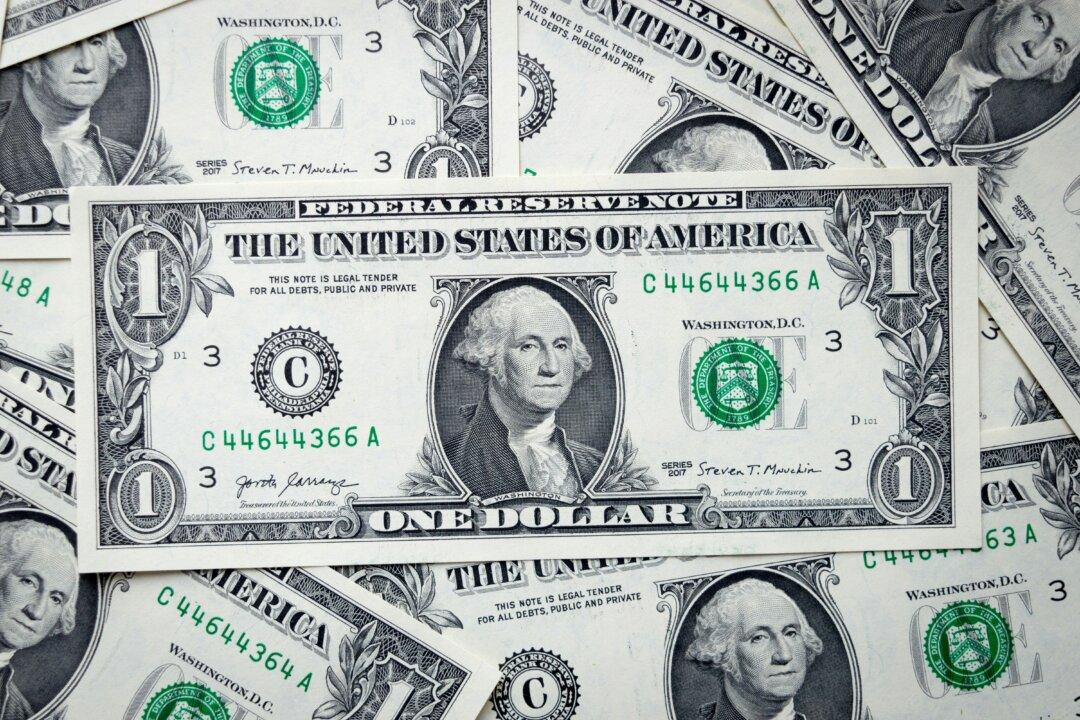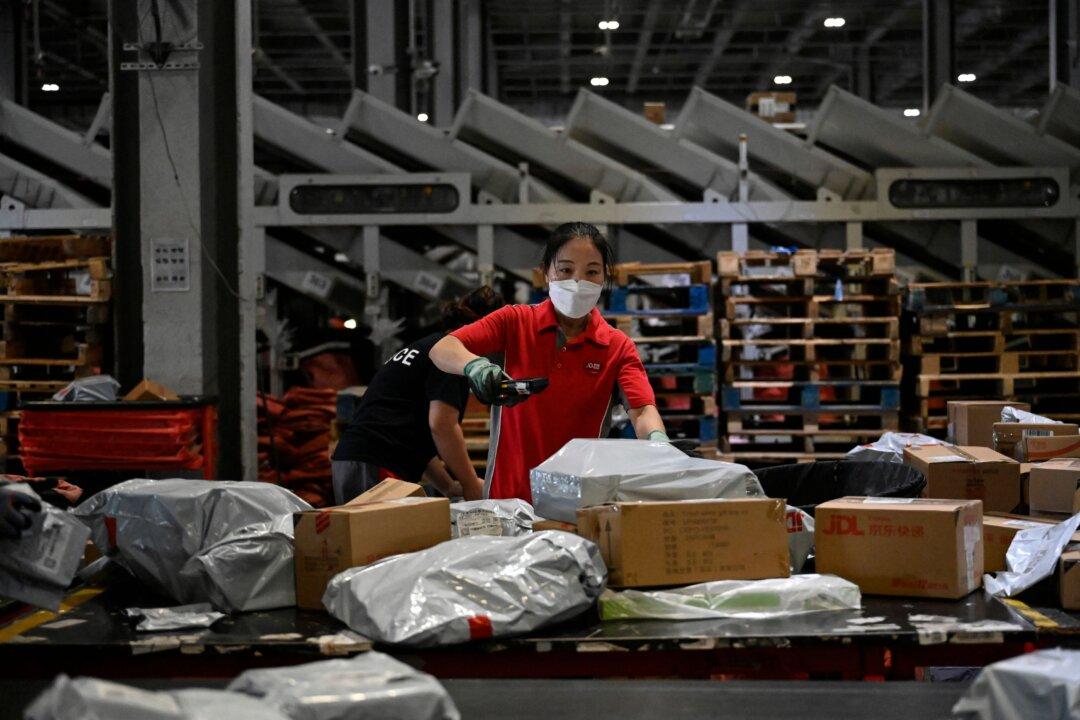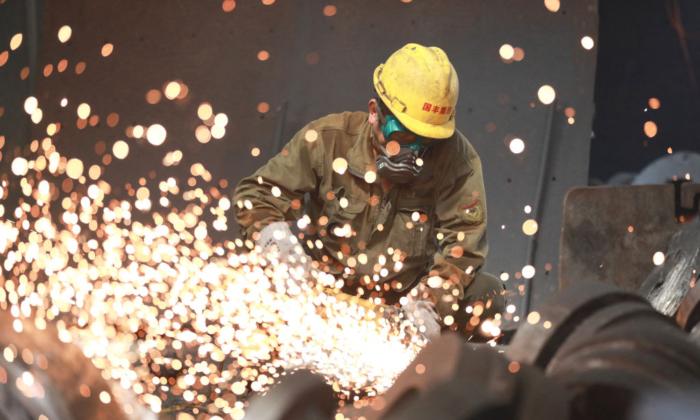While China’s new electric vehicle (NEV) juggernaut surges ahead as an unstoppable force driven by a sizable domestic market and supportive government policies, escalating geopolitical tensions and increased scrutiny of China’s foreign investments are presenting significant hurdles to the sector.
These challenges are also exerting pressure on the profitability and leverage of Chinese automakers moving forward.
This is according to experts such as Moody’s and HSBC Global Research, who also believe that NEV makers in China face significant risks, as severe competition and pricing wars threaten to force out smaller NEV makers in the world’s most assertive EV-exporting country.
“The transition to NEVs will pressure the profitability and leverage of Chinese automakers rated by Moody’s, a credit negative,” said Moody’s in a note published on Monday and viewed by The Epoch Times.
“Research and development investments and operational expenses to support domestic and international NEV sales will increase costs, while intense competition in the overall auto and NEV markets will exacerbate the situation,” the note added.
According to the global ratings agency, escalating geopolitical tensions and heightened scrutiny of China’s investments by other governments, particularly those of the United States and the European Union, pose huge risks to China’s NEV value chain.
These moves refer to increased regulatory examination and skepticism regarding Chinese foreign direct investment, stemming from concerns about national security, economic dependence, and the potential for political influence.
In the United States, for instance, this has taken the form of more rigorous reviews by the Committee on Foreign Investment, which assesses the national security implications of foreign investments. Potential increases in U.S. tariffs on Chinese NEV imports could limit their market presence.
In addition, the U.S. Inflation Reduction Act (IRA) includes provisions that could impede the growth of Chinese NEV battery companies by restricting the use and eligibility for subsidies of EV batteries from foreign entities.
Reportedly, aligning with the United States’ efforts to curb China’s influence, the Canadian government too has decided to conduct strict reviews on foreign investment proposals in sensitive areas. Canada announced this decision, at the end of March, to curb potential foreign influences that may affect national security.
In October 2023, the European Commission also launched an anti-subsidy investigation into EU imports of battery electric vehicles (BEVs) from China, potentially hindering the overseas sales growth of Chinese NEVs.
Similarly, despite Chinese mining companies and chemical producers dominating the extraction and refining of NEV-related raw materials, they may face rising costs and operational complexities in securing supplies, says Moody’s.
This is happening as many governments increasingly prioritize the preservation of national resources and raw materials to fuel their own economic growth agendas.
For instance, Indonesia banned nickel ore exports starting in January 2020 to incentivize overseas nickel miners to process ore domestically and invest in local processing capacity. The newly elected Indonesian government in 2024 is expected to continue emphasizing downstream commodity processing and value chain development.
Economic Growth From EVs
From a nation where NEVs were virtually nonexistent just a decade ago, China has not only emerged as the world’s largest NEV market, where one in every three cars sold is electric, but it’s also witnessing a decline in demand for vehicles powered by internal combustion engines (ICE).NEVs encompass a range of vehicles, including all-battery electric vehicles, plug-in petrol-electric hybrids, including extended-range electric vehicles, and hydrogen fuel-cell vehicles.
The local NEV leader BYD has surpassed long-standing leader VW as China’s top-selling car brand. In December, it even surpassed Tesla to become the world’s largest manufacturer of battery-only vehicles by volume.
Although Tesla has since reclaimed that position, according to TrendForce, a global market intelligence firm, BYD is poised to challenge Tesla for the crown in EV sales in 2024.
According to Moody’s, China’s NEV industry is poised to contribute significantly to the country’s economic development by the end of the decade, owing to strong domestic NEV demand, regulatory backing, and China’s leadership position in the global electric vehicle value chain.
“We forecast NEVs’ and related industries’ contribution to China’s nominal GDP will rise to 4.5–5.0 percent by 2030 in our base-case scenario. Our estimates are underpinned by growing domestic demand for NEVs and investments in charging infrastructure, China’s cost advantages in NEV and battery manufacturing, and a raft of public policies that support the sector and its adjacent industries,” wrote Gerwin Ho, Moody’s vice president and senior credit officer, in the note.
China’s government has consistently provided policy support to the NEV industry. In response to economic challenges, Beijing introduced new tax incentives in June 2023. Under these measures, purchasers of new NEVs in 2024 and 2025 will enjoy exemption from purchase tax, potentially saving up to 30,000 yuan ($4,170) per vehicle.
China has made significant strides as well in the NEV export market. In 2023, Chinese auto exports rose by 64 percent, with a strong push by NEVs as manufacturers expanded overseas. This growth was driven by both domestic firms like BYD and Western companies like Tesla that have substantial production capacity in China. Moreover, in 2022, China exported a total of 1.06 million electric passenger vehicles, nearly 89 percent more than the previous year.
The China Association of Automobile Manufacturers reported in February that in January 2024 alone, China also exported 95,000 new energy passenger cars, which is a 27 percent increase compared to the same period last year, while reports suggest that trend might be maintained in 2024.
On Tuesday, the Financial Times reported that European ports are experiencing a significant buildup of imported vehicles, resulting in them resembling sprawling “car parks.” Port and car industry officials allege that a backlog of Chinese EVs is contributing to this issue.
China’s assertiveness in the EV export market reflects its broader ambitions to lead in the global clean energy sector, leveraging its manufacturing capabilities and government support to gain a competitive edge.
Growing demand and expanded production capacity will drive NEV sector development in the face of regulatory assistance, the government hopes, with increased vehicle ownership due to urbanization, growing income levels, and lower NEV prices fuelling demand, Moody’s noted.
Strain on the Sector
Yet, the move to NEVs will put pressure on the profitability and indebtedness of Chinese manufacturers, Moody’s adds.“Research and development investments and operational expenses to support domestic and international NEV sales will increase costs, while intense competition in the overall auto and NEV markets will exacerbate the situation,” the note said.
And, diving deep a clearer picture of the true profile of the China EV sector emerges, says an HSBC Global Research note—and viewed by The Epoch Times—on China’s April 2024 NEV outlook.
Dissecting the profitability of NEV makers, HSBC analysts have found that only two NEV makers—BYD and Li Auto—have shown strong year-over-year earnings growth, while most other players saw either a flat or a year-over-year profits reduction in the financial year 2023.
“These are the natural results of the fierce competition observed in the 2023 China auto market,” the HSBC note said.
According to both Moody’s and HSBC, the shift toward a greater sales contribution from NEVs in China’s auto market requires additional investment in R&D from automakers.
This comes on top of various operational expenses, including those relating to sales and marketing to support the launch of new NEV brands and products in both domestic and international markets.
“Given NEVs’ relatively lower volumes, smaller market size, shorter history, and initial startup costs, most NEV models are not as profitable as comparable ICE counterparts. The combination of fierce market competition in the overall auto and NEV markets as well as challenges posed by ongoing technological advancements will pressure automakers’ profitability,” Moody’s concluded.
